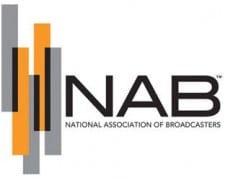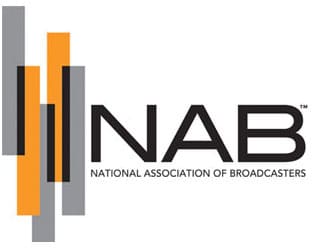 When a weather emergency strikes, the primary source of critical, life-saving information for citizens is a group of private businesses, not a group of government agencies. Broadcasters are the ones who drop whatever they have on their schedule, often including paid advertising, and focus on providing emergency information, as NAB VP Ann Marie Comming and a video from a University of Oklahoma professor point out.
When a weather emergency strikes, the primary source of critical, life-saving information for citizens is a group of private businesses, not a group of government agencies. Broadcasters are the ones who drop whatever they have on their schedule, often including paid advertising, and focus on providing emergency information, as NAB VP Ann Marie Comming and a video from a University of Oklahoma professor point out.
In a blog post, Cumming noted that the video, from UO’s Media Arts Professor Scott Hodgson is the third such work, following one that looked at tornadoes in Joplin MO and Tuscaloosa AL; and a second that looked at stations in multiple markets providing coverage during Superstorm Sandy.
Cumming wrote, “This film focuses on Moore, OK, where in May deadly tornadoes stretching 17 miles long and measuring 1.3 miles wide ripped through the nation’s heartland, demolishing neighborhoods, businesses, a hospital and two elementary schools. Twenty-four people died, a toll that could have been far greater were it not
for the efforts of local broadcasters.
Oklahoma governor Mary Fallin thanked broadcasters in a post-storm press conference, saying, “The media has done a superb job over the last couple of days of keeping people informed about the current weather conditions, especially our weathermen and those that have been on the ground driving and calling and tracking the storm itself…I had many people come up and say, because of the media and their rapid response and reporting on the track of the storms, they were able to get to a storm shelter and be safe.”
“This 6-minute mini-documentary features never-before-seen footage of the devastation, along with testimonials from local broadcasters related to their preparation for the unprecedented weather emergency, their uninterrupted news coverage, their support for first responders and victims of the storm, and their assist in recovery efforts. The film includes commentaries from broadcasters such as these:
* “It was no longer about having good television, and instead it was about providing life-saving information.” Damon Lane, KOCO-TV Oklahoma City chief meteorologist
* “You have to be as descriptive as you can and paint the best picture of what the storm is doing and where the storm is.” John Welch KFOR-TV, Bob Moore Chopper 4 pilot/reporter
* “(Our station) was constantly getting needed, vital information…(Listeners) knowing that you’re connected like that means the world to them.” Janet, KJ103 (KJYO-FM), morning show host
* “When we really shine is when the storm has passed and the recovery efforts start.” Brad Copeland, KATT-FM morning show host
* “Any little way that we can help make someone’s life a little easier during these tough times. I think that’s what it’s all about.” Steve O’Brien, Magic 104.1 KMGL, program director/morning show host.
* “With the power of that storm and with the velocity that it had coming in to that Moore area; if (residents) hadn’t known, we could have lost hundreds (of lives), and we didn’t.” Linda Cavanaugh, KFOR-TV, anchor/reporter
“NAB salutes the heroic lifeline coverage of Oklahoma broadcasters. Many thanks once again to the film’s producer Media Arts Professor Scott Hodgson from the University of Oklahoma. Working with the Broadcast Education Association, Scott and his students spent countless hours collecting footage and conducting interviews for this video account of broadcasters’ remarkable efforts in covering this horrific act of Mother Nature.”
Here’s a link to the video:
http://www.youtube.com/watch?v=AP6vZRz6e54
RBR-TVBR observation: It is amazing when you think about it that despite a government agency – FEMA – that is specifically tasked with handling natural disasters it is a class of private businesses that shoulder the primary and critical responsibility for keeping the public informed.
Neither the MVPD, the online or the mobile communications platforms can manage this. They lack boots on the ground to do the reporting necessary; or their infrastructure is too easily knocked out, as often happens with cable service; or in the case of mobile, their spectrum-hogging one-to-one distribution model quickly chokes the service into uselessness when it is needed the most.
This is why the health and vibrancy of the broadcast platform should be of critical interest to denizens of Capitol Hill and The Portals, where the FCC is housed. Broadcasters function as a public safety organization, and fully earn their public service stripes in a way no other media can match.





